Best Ways to Banish Mildew Stains from Colored Clothes

So you are looking for how to get mildew stains out of colored clothes. Maybe you just noticed a musty smell from the laundry basket. Or perhaps you found greyish stains on your clothes. Whatever it is, I’m here to help!
After reading this post, you will know exactly how to handle mildew stains in clothes like a pro. So don’t waste another second, let’s get to work!
What Is Mildew, And Why Does It Stain Clothes?
Mildew is a fungus that thrives in warm, humid conditions. Damp areas like the bottom of your laundry basket or washing machine are like an incubator for mildew. That is why people usually find mildew in their garments when they forget to take the clothes out after washing.
Besides creating ugly stains and sour odors, mildew may also be detrimental to your health.
Older people and small children can experience symptoms like wheezing, coughing, and itchy eyes. Prolonged exposure to mildews may also lead to major health problems such as respiratory illnesses and immunological disorders (1).
Why Do You Need To Remove Mildew From Clothes?
If the ugly mildew stains can’t give you the motivation to remove them from your clothes, here are several other reasons to get rid of them as soon as possible:
1. The Smell Of Mildew Is Terrible
Usually, the sour, nasty smell of mildew is enough to get people to act. When there are only a few spores, the odor may not be as intense. But as they begin to build up, the smell will become unbearable.
This odor has been compared to decaying wood or dirty socks. Doesn’t sound good, does it?
2. It Is Harmful To Your Health
Mildew has varied effects on different people. While some people may exhibit no signs or symptoms, others may have severe allergic responses, asthma, or other respiratory problems.
Young children are very sensitive to mildew. When they are exposed to it, they have a higher chance of developing asthma by the age of 7. So for the sake of your children, don’t take any risks!
3. Mildew Will Spread Very Quickly
Mildew spores can fly in the air and spread to other objects in your house. Your carpets, sofa, curtains, walls… everything can be stained by mildew. When it is cold and humid, the mildew can grow and expand within 1 or 2 days.
4. It Can Destroy Your Clothes
Besides the fact that it leaves foul odors and stubborn stains, it also destroys the fibers of your clothing. After a while, the fabric will weaken and the color will become significantly lighter.
Pretreat Mildew Stains For Optimum Results
If you want to eliminate mildew stains successfully, there are several things you need to do first to achieve the best results.
Step 1: Dry It
If your garment is still damp, the first thing you should do is dry it under the sun. Hang it outside or lay it near a window. Wait until it is completely dry.
Step 2: Brush It
Start scrubbing the soiled area with an old toothbrush. Try to brush away as much mildew as possible. Afterward, discard the toothbrush.
Step 3: Shake It
Take your garment outside and shake it hard to remove the excess mildew. Now, you can move on to the next steps:
6 Foolproof Methods To Get Mildew Stains Out Of Colored Clothes
Now that the mildew stains are properly pretreated, let’s move on to the cleaning process. Many products are proven to be effective for mildew stains. So just choose the most suitable method for you and give it a try!
1. Vinegar

Vinegar is the go-to method to treat mildew stains and smells. It is cheap, accessible, AND effective. What more can you ask for?
Remember only to use white distilled vinegar for cleaning purposes. Other types may contain colored tannins that stain your clothes.
Step 1: Apply Vinegar
Mix 1 cup of cold water along with 1 cup of white vinegar in a spray bottle. Then spray it on the stained area. If the stain is too big, you can soak the whole garment in the mixture instead.
Step 2: Scrub It
Take an old toothbrush or clothes brush and scrub the stain well. This will work the solution deep in the fabric.
Step 3: Wash It
Turn your clothes inside out and place them in the washer along with any detergent you like. You can add 1 cup of vinegar to help remove the smell. Use the hottest water setting that your clothes can withstand and start a cycle.
You can wash mildew-stained clothes with other garments. However, if it is seriously soiled, I recommend you wash it separately.
Step 4: Dry It
Do not use the tumble dryer! The heat from it set the stain in, making it almost impossible to remove. Instead, allow your clothes to air dry on a drying rack or a clothesline.
If you dry the garment outside, turn the clothes inside out and avoid direct sunlight because the UV rays can fade the fabric’s color.
For more instructions on using vinegar to treat mildew stains, check this out!
2. Lemon Juice And Salt

This is another natural yet effective home remedy to treat mildew stains. Not only can lemon remove stains, but it will also give your clothes a lovely, zesty citrus scent.
Step 1: Apply Lemon Juice And Salt
Squeeze 1 lemon to get about ¼ cup of fresh lemon juice. Add 2 tablespoons of salt and mix it until it forms a paste. Spread the mixture evenly on the mildew stain.
Step 2: Scrub It
Grab a toothbrush and gently scrub the area. Then let it sit for 15-30 minutes.
Step 3: Wash It
Brush off the lemon juice and salt mixture and put the clothes in the washer. Remember to turn the clothes inside out to prevent the dye from fading.
Pour your favorite detergent into the machine and run a cycle. If your clothes still have a mildew smell, add 1 more cup of vinegar.
Step 4: Dry It
Hang your clothes on a drying rack or under the sun. The sun rays can bleach stains, but they can also fade colored garments. So I recommended turning them inside out first.
Learn this lemon juice and salt method with a lively demonstration!
Baking Soda

Besides lemon juice and vinegar, baking soda is another cheap and accessible product to treat stains. Plus, it can remove that nasty mildew smell and brighten your clothes.
Step 1: Apply Baking Soda
Measure ¼ cup of baking soda and put it in a bowl. Then pour in enough hot water to make a paste. Then apply that paste to the stain.
Step 2: Scrub It
Grab an old toothbrush and scrub the stained area. Continue to scrub until the stain begins to fade. Repeat the steps if needed.
Step 3: Wash It
Just like before, wash the clothes with any detergent you like. Set the hottest water temperature that is safe for clothes for better results.
Step 4: Dry It
Allow your clothes to air dry indoors or outdoors. Avoid using the tumble dryer.
4. Borax And Detergent

Borax is a cheap, accessible laundry additive that can remove mildew stains with ease. It’s available at any supermarket or department store near other laundry detergents.
Step 1: Soak It With Borax
In a bowl, mix 1 teaspoon of borax with 1 cup of hot water and ½ teaspoon of powder detergent. Stir it up to dissolve the powder. Then soak the stained area into the solution for 30 minutes.
If the stain is too big, you can fill a bucket or a sink with 2 liters of hot water and 2 cups of borax. Mix it up and soak your clothes in it. Weigh the clothes down with a jar so the whole garment is evenly soaked.
Step 2: Brush It With Detergent
After soaking, squeeze out the excess water from your clothes. Turn them inside out and apply some detergent on the opposite side of the stained area. Then get an old toothbrush and gently scrub the stain to work the stain away from the fabric.
Step 3: Wash It
Wash your clothes inside out to prevent discoloration. Add detergent and ½ cup of borax to boost its cleaning ability. Again, pick the hottest water setting that your clothes can endure.
Step 4: Dry It
Allow your clothes to air-dry naturally without the help of the tumble dryer.
Let’s see how you can get rid of mildew stains using borax!
5. Hydrogen Peroxide

When dealing with colored clothes, you should never use chlorine bleach. Chlorine bleach will create permanent bleach stains that are very visible on bright-colored clothes. So instead of bleach, try hydrogen peroxide. It can kill mildew in clothes, and it is safe to use on most dyes and fabrics.
Step 1: Spray It
Even though hydrogen peroxide can be used on colored clothes and sensitive fabric, you still should test it on a small area of your clothes. Continue to use it on the whole garment if nothing bad happens after a few minutes.
Add about 1 cup of hydrogen peroxide into a spray bottle. Or you can purchase some hydrogen peroxide spray to make things easier. Then spray the product directly on the stained area and wait for 15 minutes.
Step 2: Scrub It
While you wait, gently scrub the stain with an old toothbrush to further remove the mildew.
Step 3: Wash It
Turn the clothes inside out and wash them with the hottest water setting and your detergent of choice.
Step 4: Dry It
Once it is thoroughly washed, hang it to dry on a drying rack or clothesline. Skip the tumble dryer.
6. Tea Tree Oil

Tea tree oil is one of the most effective solutions for molds and mildews (2). Just remember to purchase pure oil, avoid those with additives. Synthetic oil can create grease stains on your clothes.
Step 1: Spray It
In a spray bottle, pour 1 cup of hot water and 1 teaspoon of tea tree oil. Then spray both the inside and outside of the stained area. Let it sit for 10 minutes before moving on.
Step 2: Wash It
Pour the remainder of the bottle into the washing machine along with any detergent you like. Set the water temperature to high and run a cycle.
Step 3: Dry It
Recheck the stain and wash it one more time if necessary. Then let your clothes air dry naturally.
7 Tips to Prevent Mildew on Clothes

Getting rid of mildew stains is not impossible, but it can be quite time-consuming. So if you don’t want to spend every weekend scrubbing and washing clothes, keep in mind these tips to prevent mildew from growing.
1. Don’t Forget To Take Clothes Out After Washing
Leaving clothes overnight in the washing machine is the most common reason for mildew growth in clothes. Remember to dry your clothes immediately after washing, either outside or in a dryer. The longer they stay damp, the more likely mold will form.
2. Don’t Put Clothes Away While Damp
Mildew thrives in damp and dark places. So if you put clothes in your wardrobe while they are still wet, you will notice some mildew stains the very next day. Make sure that they are completely dry before putting them in your closet.
3. Take Care Of Sweaty Clothes As Soon As Possible
Remember that mildew grows everywhere there is moisture, sweat is no exception. After going home from the gym, take out your sweaty clothing or shoes and wash them immediately. If you can’t wash them yet, hang them to dry separately. Avoid putting them near other garments.
The same thing should be done with wet swimming suits or any wet clothing.
4. Use Tea Tree Oil To Prevent Mildew
Mix 1 cup of water and 1 teaspoon of tea tree oil in a spray bottle. Place the spray bottle near your closet and use it on your clothes every 2 days or so. Tea tree oil will stop the spread of mildew and give your clothes a pleasant smell.
5. Make Sure Your House Has Good Ventilation
If you want to prevent mildew in clothes, you must also stop its growth in your home. Allow fresh air to circulate by turning on ceiling fans and opening windows. Close all windows when it is raining.
Ensure your carpets and upholstery are clean and dry so they don’t become a breeding ground for mildew.
6. Dry Your Clothes Under The Sun
If you can, sun drying your clothes is the best choice to avoid mildew stains and smell. When you dry your clothes indoors, you can’t be sure that they will dry completely. And you already know that storing damp clothes is not ideal.
If you can only dry them indoors, invest in a dehumidifier. Place it near your drying rack when you need to hang clothes to dry. It is an easy yet practical approach to reduce humidity levels in your house.
7. Clean The Washing Machine’s Gaskets Regularly
The rubber gasket on your front-loading washing machine is the perfect breeding ground for mold and mildew. To avoid smells and buildup, spray the gasket with some vinegar and wipe it every now and then.
FAQs
It is time for some FAQs! Take a look at these questions for more information regarding the topic for today.
Got Everything You Need?
Mildew stains are not just ugly but also harmful to your health. So knowing how to remove mildew out of garments will not only save you money on dry cleaning, but it will also protect you and your family members from mold spore exposure and many health problems.
I hope that by now, you already have all the knowledge and techniques you need to handle mildew stains on colored clothes. Do you have any exciting hacks that I haven’t covered in this article? Let me know in the comment section down below.
Also, if you find this post helpful, don’t forget to give it a like and share it with your friends. Take care and goodbye!

Reference
- Centers for Disease Control and Prevention, 2020. Basic Facts about Mold and Dampness [Online] Available at: https://www.cdc.gov/mold/faqs.htm
- Toscano, A. W., 2015. An Evaluation of Antifungal Agents for the Treatment of Fungal Contamination in Indoor Air Environments. International Journal of Environmental Research and Public Health 12(6): 6319–6332.

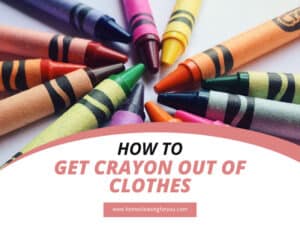
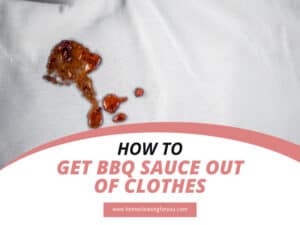
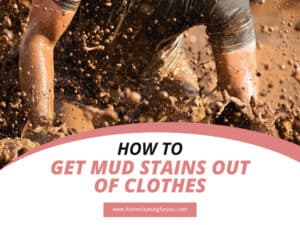

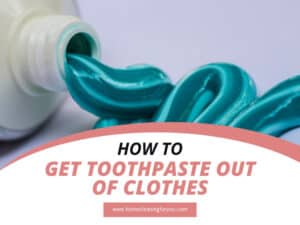
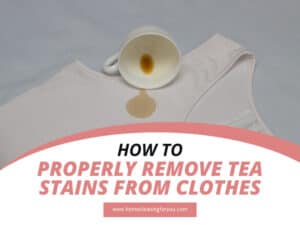
Samantha Lee
Head Cleaning Expert
Expertise
Professional Home Cleaning, Green Cleaning Techniques, Stain Removal & Fabric Care, DIY Home Maintenance & Organization, Sustainable Cleaning Products, Home Care for Busy Lifestyles
Education
University of Denver
Samantha Lee is the Head Cleaning Expert at HomeCleaningForYou.com, specializing in eco-friendly home care. She holds a Bachelor of Science in Environmental Science from the University of Denver, focusing on sustainable cleaning solutions.
With expertise in green cleaning, stain removal, and DIY home maintenance, she helps homeowners keep their spaces fresh and chemical-free. Samantha has been featured in lifestyle publications and has partnered with brands promoting natural cleaning products.
She also shares practical tips through her blog, online courses, and workshops. Passionate about sustainability, she enjoys testing new eco-friendly cleaning methods and spending time outdoors.